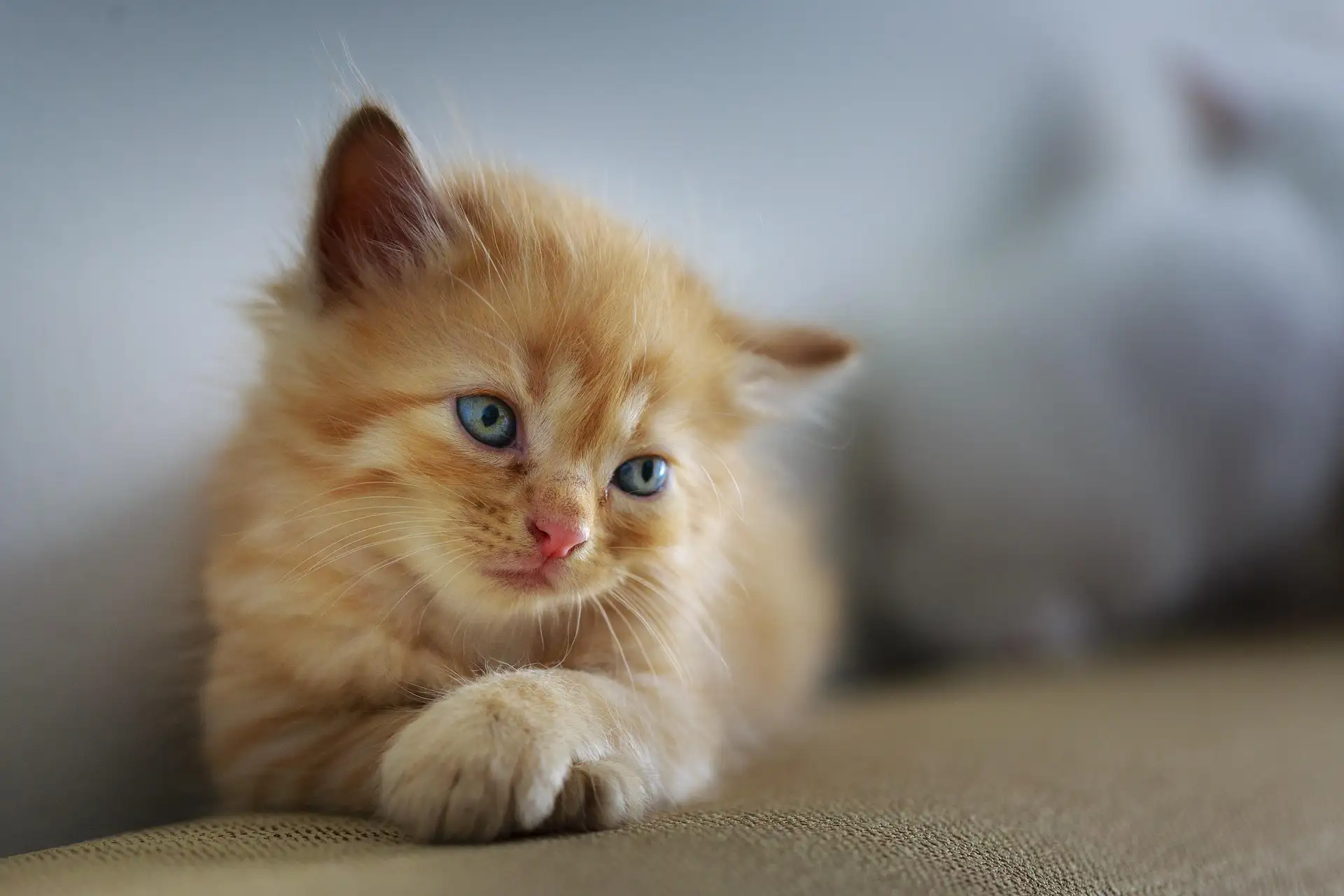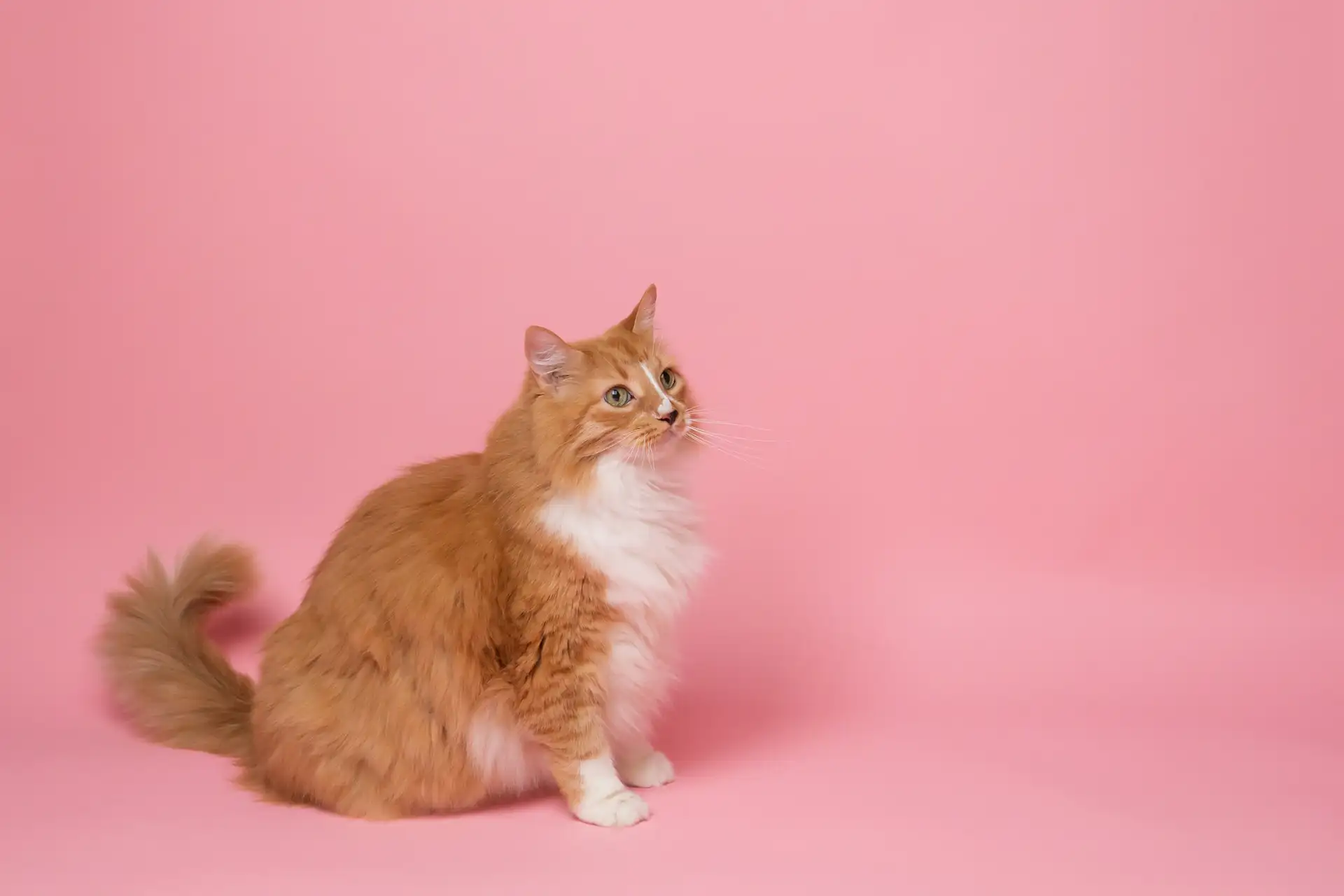Your senior cat’s playful spirit doesn’t fade with age – it simply transforms.
Playing with your aging feline companion remains crucial for their physical health, mental sharpness, and emotional well-being. Just like humans, cats need regular activity to maintain their quality of life as they enter their golden years.
In this guide from a local Oshawa, ON vet, you’ll discover practical strategies for
keeping your senior cat active and engaged through play. We’ll explore:
- Safe play techniques tailored for older cats
- Essential tips for creating an age-friendly play environment
- Recommended toys and activities that match your cat’s energy levels
- Expert advice from veterinarians on senior cat care
Whether your cat is just entering their senior years or has been enjoying retirement for a while, you’ll learn how to adapt playtime to their changing needs. A few minutes of daily play can spark joy in your senior cat’s life, strengthen your bond, and help maintain their physical health.
Your
Oshawa, ON vet understands that every senior cat has unique needs. Let’s explore how to make playtime both safe and enjoyable for your aging feline friend.
Understanding Senior Cat Behavior and Activity Levels
Your senior cat’s behavior changes naturally with age, much like humans experience shifts in energy and mobility as they grow older. A cat entering their golden years (typically around age 7-10) displays distinct behavioral patterns:
Physical Changes
- Reduced jumping height and distance
- Slower movements and reactions
- Shorter bursts of energy
- Increased need for rest between activities
- Preference for lower surfaces and easier-to-reach spaces
Behavioral Indicators
- Less interest in high-energy chase games
- Greater appreciation for gentle play styles
- More selective about play times
- Stronger focus on comfort during activities
You’ll notice your senior cat showing clear preferences for certain types of play. They might avoid jumping after toys but show enthusiasm for ground-level activities. Watch for these signs:
- Head bobbing and ear twitching when interested
- Tail swishing while engaged
- Gentle pawing at toys
- Quick disengagement when tired
Adapting Play Styles
Your senior cat benefits from modified activities that match their current abilities:
- Ground-level toys for easy access
- Slower-paced games that build confidence
- Shorter play sessions spread throughout the day
- Activities that don’t strain joints or muscles
Recognizing these changes helps you create engaging play experiences that keep your senior cat active while respecting their physical limitations. A well-adapted play routine maintains their quality of life and strengthens your bond.
Benefits of Play for Senior Cats
Regular play sessions offer vital advantages for your senior cat’s physical and mental well-being. Let’s explore these essential benefits:
Mental Stimulation
- Interactive play engages your cat’s natural hunting instincts
- Problem-solving games sharpen cognitive function
- New toys and activities create fresh neural pathways
- Mental engagement helps prevent cognitive decline
Physical Health Benefits
- Gentle exercise maintains healthy muscle mass
- Regular movement keeps joints flexible
- Physical activity supports healthy weight management
- Light stretching through play improves circulation
Emotional Well-being
- Play reduces anxiety and depression symptoms
- One-on-one attention strengthens your bond
- Success in catching toys builds confidence
- Social interaction prevents loneliness
Your senior cat’s play sessions act as a natural stress reliever, releasing feel-good hormones that promote relaxation and contentment. Short bursts of activity trigger their natural predatory sequence – stalking, chasing, and pouncing – which satisfies their instinctual needs.
Physical exercise through play helps maintain your cat’s mobility and independence. A moving target encourages them to stretch, reach, and use their muscles in natural ways. These movements keep their joints lubricated and muscles engaged without putting excessive strain on their aging body.
Wag has a helpful article on keeping older cats comfortable here.
Creating a Safe Play Environment for Senior Cats
Your senior cat needs a secure space to enjoy playtime without risking injury. A
carpeted room provides ideal traction for older cats, preventing slips during those enthusiastic pounces. Hardwood or tile floors can be hazardous, causing your cat to lose confidence during play sessions.
Essential safety measures for your senior cat’s play area:
- Remove loose rugs that might bunch up or slide
- Clear away electrical cords, strings, or ribbons
- Keep the space free from sharp-edged furniture
- Block access to high surfaces that might tempt jumping
- Ensure adequate lighting for better visibility
Watch for these potential hazards:
- Small objects that could become choking risks
- Gaps behind furniture where your cat might get stuck
- Windows or doors that could create dangerous drafts
Stay present during play sessions to monitor your cat’s activity level and prevent accidents. Your supervision helps identify signs of fatigue or discomfort early, allowing you to adjust the play intensity accordingly. A dedicated play space near comfortable resting spots lets your senior cat transition smoothly from activity to rest when needed.
Establishing a Routine Playtime Schedule
Senior cats thrive on predictability. Setting fixed playtimes creates a reliable structure that helps your aging feline maintain mental sharpness and emotional balance.
Best Times for Play:
- Early morning or evening sessions align with natural feline activity patterns
- 10-15 minute intervals work well for most senior cats
- Multiple short sessions spread throughout the day maintain interest
Your cat’s internal clock will quickly adapt to these scheduled interactions. You’ll notice them waiting in their play area or showing increased activity as the designated time approaches.
Benefits of Consistent Play Schedule:
- Reduces anxiety through predictable daily structure
- Strengthens the bond between you and your cat
- Helps maintain healthy sleep patterns
- Creates positive anticipation and mental stimulation
Many senior cats respond well to evening play sessions around dinner time. This natural sequence – play followed by meal and rest – mimics their instinctive hunt-eat-groom-sleep pattern. Watch your cat’s energy levels and adjust the timing to match their most alert periods.
Remember to respect your cat’s preferences – some days they might need shorter sessions or gentler interaction. The key is maintaining the routine, even if the intensity varies.
Tips for Playing with Older Cats Safely
Your senior cat’s safety during playtime requires careful attention to their physical cues and limitations. Watch for these signs that indicate your cat needs a break:
- Heavy breathing or panting
- Lying down during play
- Decreased interest in the toy
- Walking away from the play area
Safe Toy Selection
Choose toys that are gentle and easy for your senior cat to play with:
- Wand toys with soft attachments
- Lightweight plush mice
- Gentle rolling balls
- Stationary toys that don’t require jumping
Avoid These Play Styles
Certain play styles may not be suitable for older cats and can potentially cause injury or discomfort:
- Laser pointers (can cause frustration)
- High-jumping activities
- Fast-paced games
- Rough wrestling or hand play
Keep play sessions short – 5-10 minutes is ideal for most senior cats. Your cat will naturally take breaks when tired, often settling down for a quick nap. Create a gentle play environment by moving toys slowly and keeping them close to ground level. This approach prevents strain on aging joints while maintaining your cat’s natural hunting instincts.
Check out
this blog from Cornell University on caring for an older cat.
Recommended Types of Play and Toys for Senior Cats
Your senior cat deserves engaging toys that match their energy levels. Here’s a selection of age-appropriate toys and activities to keep your older feline friend active:
Interactive Play Options:
- Wand toys with feathers or ribbons at a lower height
- Laser pointers moved slowly across the floor
- Crinkly balls that make noise but stay in place
- Catnip-filled soft toys for gentle batting
Brain-Stimulating Activities:
- Food puzzles with larger openings
- Treat-dispensing balls that roll slowly
- Snuffle mats for hidden treats
- Simple cardboard boxes with peek holes
Low-Impact Entertainment:
- Soft plush toys for kicking
- Light plastic springs
- Stationary scratching posts
- Cat grass gardens for sensory stimulation
These toys encourage natural hunting behaviors while protecting aging joints. Place toys at ground level or slightly elevated positions to prevent jumping strain. Rotate toys weekly to maintain interest and remove any damaged items immediately.
You’ll find your senior cat gravitates toward specific toys – pay attention to their preferences and adjust your toy selection accordingly. Many older cats enjoy social play with their humans more than solo activities.
Role of Veterinarians in Senior Cat Care
Your veterinarian plays a crucial role in maintaining your senior cat’s health and activity levels. Regular check-ups allow your vet to:
- Monitor joint health and mobility
- Assess muscle mass and strength
- Identify potential health issues early
- Recommend appropriate exercise modifications
Your can create a personalized exercise plan based on your cat’s:
- Age and weight
- Medical history
- Current physical condition
- Specific health concerns
Schedule veterinary visits every 6 months for senior cats. These appointments help track changes in mobility and adjust play activities accordingly. Your Oshawa, ON vet might suggest specific toys or exercises that accommodate any physical limitations while keeping your cat active and engaged.
Looking to adopt a kitty? Read our blog on adopting older cats
here.
Pro Tip: Bring a list of your cat’s current play habits and behaviors to vet appointments – this information helps your veterinarian make informed recommendations about exercise intensity and duration.
Conclusion
Keeping your senior cat active brings joy and vitality to their golden years. Your dedication to regular playtime creates precious moments of connection while supporting their physical and mental well-being. Start small – even 5-10 minutes of gentle play can make a significant difference in your aging companion’s life.
Remember:
every senior cat is unique. Listen to their cues, respect their pace, and celebrate their playful moments. Whether you’re in or anywhere else, your commitment to
keeping a senior cat active strengthens your bond and enriches their daily life.
Take that first step today – grab a favorite toy, set aside dedicated playtime, and watch your senior feline friend light up with renewed energy and happiness.
FAQs (Frequently Asked Questions)
Why is play important for senior cats’ health and happiness?
Play provides essential mental stimulation, physical exercise, and emotional well-being for senior cats. It helps maintain muscle tone, joint flexibility, reduces stress, and keeps your older feline companion happy and healthy.
How can I recognize my senior cat’s play preferences and limits?
Senior cats may show changes in energy and agility. Observe their behavior to identify preferred types of gentle play and signs of fatigue or discomfort, ensuring activities are adapted to suit their age and capabilities.
What are the best types of toys and play activities for older cats?
Interactive games that encourage stalking and pouncing without excessive strain, puzzle feeders to promote cognitive engagement, and lightweight toys like wand toys or soft balls are ideal for keeping senior cats active safely.
How do I create a safe play environment for my senior cat?
Select low-risk areas with good traction such as carpeted rooms, remove hazards that could cause slips or falls, and supervise playtime to prevent injuries. This ensures your senior cat can enjoy activity safely.
Why is establishing a routine playtime schedule beneficial for senior cats?
Consistent daily play sessions at the same time each day support mental alertness, emotional security, and help your senior cat anticipate enjoyable activity, contributing to overall well-being.
What role does your veterinarian play in caring for an active senior cat?
We can provide guidance on safe exercise levels tailored to your cat’s health status, monitor mobility through regular check-ups, and advise on any limitations to ensure your senior cat stays active safely.
Contact Our Oshawa, ON Animal Hospital
Are you in the market for a great animal clinic near Oshawa? Have you been searching listings for ‘best vet near me’ or something similar? Look no further! We are always devoted to providing both great service and great care.
Visit our Service page
here for more insight about our clinic and the animals we treat.
This blog is meant to be informational only. Always consult with your veterinarian for the right medical advice, diagnosis, or treatment plan for your pet and follow their advice.



